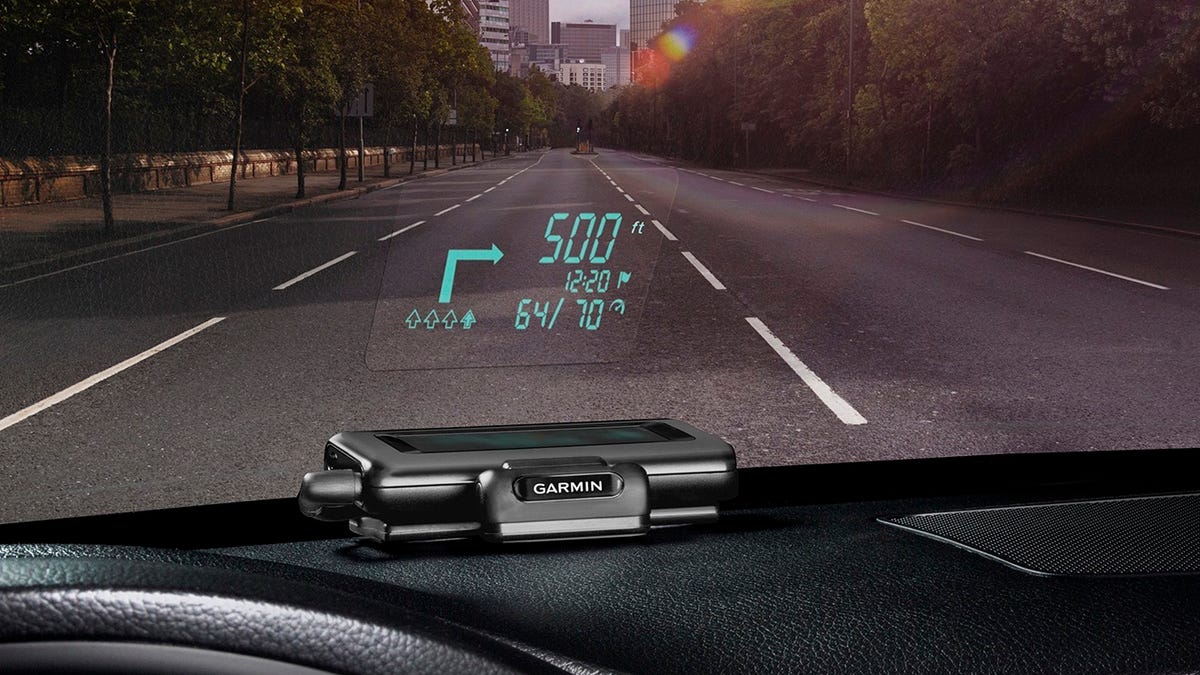Garmin HUD projects directions onto your windshield
Elevating navigation data into the driver's line of sight, Garmin's first-ever head-up display aims to reduce distraction, and it looks pretty cool.

Smartphones have pretty much taken over as the default navigation tool for many drivers. However, some locales (including our home state of California) have outright banned smartphone use in the car: no windshield mounts, no dashboard cradles. So, how are you going to get your turn-by-turn directions when looking at your phone is illegal? Today, Garmin announced a new way to interact with its StreetPilot and Navigon smartphone navigation apps: the HUD.
HUD -- short for head-up display -- sits on the dashboard at the base of the windshield, where it projects navigation data upward into the driver's line of sight, either onto a transparent film affixed to the windshield glass or a reflector lens that attaches to the HUD device. Both the film and reflector lens are included with the device.
Garmin states that HUD will automatically adjust the brightness of its projections, so that the display remains visible in direct sunlight or at night. The device will be powered by a 12V charging cable with an integrated USB port for keeping your smartphone charged as well.
What's your phone got to do with this? HUD's data is provided by one of Garmin's navigation apps -- either Navigon or StreetPilot -- on an Android, iPhone, or Windows Phone 8 smartphone. The head-up display pairs with your handset via Bluetooth to communicate with with the navigation app. (Many phones can also simultaneously pair with your car's Bluetooth system to broadcast the spoken portion of the turn-by-turn directions and to take incoming calls.)
In addition to turn arrows, distance to the next turn, current speed and speed limit, HUD can also display the estimated time of arrival, graphic lane guidance, traffic delays, upcoming safety camera locations, excessive speed warnings, and more.
By projecting this limited, yet relevant data up in the driver's line of sight, Garmin claims that "HUD can help increase safety and reduce driver distraction." Having used head-up displays before in certain GM and BMW vehicles, I should also point out that HUDs also look pretty cool.
The Garmin HUD will carry an MSRP of $129.99 when it becomes available this summer. Factor in at least an additional $29.99 for Garmin's StreetPilot or Navigon app for your smartphone that you'll need to power it.

